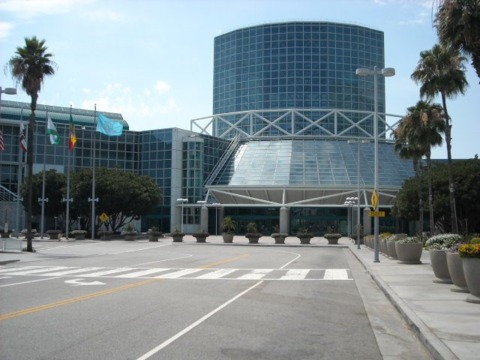ESA fees jumped 1,600% from '06-'08
Trade group's financials reveal massive dues increase during two years of downsized E3; ESRB shows 50 percent spike in ratings fees.
Gaming in the United States has grown to become a $22 billion industry at retail in 2008. Watching over the interests of the publishers involved in that industry is the Entertainment Software Association, the trade group that organizes the Entertainment Software Ratings Board and the annual Electronic Entertainment Expo.

Earlier this month, the ESA made its annual accounting to the Internal Revenue Service and in the process provided insight into some of the changes necessitated by recent format switches of E3 and general growth in the gaming industry. For the year ended March 31, 2008, the ESA reported more than $28.21 million in income-producing activities, down from $29.02 million from the previous year.
While the total dollar amount funding the organization didn't change much year-to-year, the sources of that income fluctuated wildly. For the previous year, the ESA derived most of its income--some $18.46 million--from E3 2006, the last of the large-scale trade shows put on by the organization before a radical overhaul. After E3 was moved to nearby Santa Monica for 2007 and downsized from more than 60,000 attendees to roughly 5,000, its contribution to the ESA kitty shrank to a relatively paltry $3.49 million.
When the ESA first announced the plans for a smaller E3, it said the resulting revenue shortfall would be made up for partly by a hike in the organization's membership fees. Those fees were clearly reflected in the ESA's filing, as membership dues for the year of the Santa Monica E3 (April 1, 2007 - March 31, 2008) were $17.41 million, up nearly 300 percent from the prior year's total of $4.47 million. The year before that, the ESA's total income from membership dues was just over $1 million, making for a two-year, 1,600 percent surge in fees. After the hike in fees, the ESA saw its member ranks thinned by the departures of Activision, LucasArts, id Software, Crave, and NCsoft.
The ESA's other lines of income were similarly in flux for the year. Fees paid out to the ESA's Entertainment Software Rating Board were up to $5.18 million, a jump of 48 percent over the prior year's $3.5 million. An ESRB representative told GameSpot the increase in ratings fees was due partly to the Board receiving more submissions from publishers and partly due to an "adjusted fee structure to more fully cover ESRB costs and make accommodations for lower budget games." The ESA also continued to rake in money from states who tried to defend unconstitutional gaming legislation, as the ESA chalked up another $501,000 to its growing record of "litigation recovery."
Expenses showed a bit of volatility as well. The ESA paid out $5.4 million in event-cancellation feeswhen it decided to move E3 to Santa Monica, and more than $323,000 for the year it decided to move the show back to the Los Angeles Convention Center. Political contributions were also up leading in to the 2008 elections, with the ESA reporting $338,000 for the year, up from about $102,000 for the year before.
[UPDATE]: When asked if the return to a larger E3 meant that membership fees would be decreasing, ESA CEO Michael Gallagher told GameSpot, "The positive restructuring of the E3 Expo allowed us to revisit the ESA's dues structure. It is our hope that this new model will make the ESA an attractive and accessible option for small and mid-sized publishers so we can more fully represent our industry's diversity."
[CORRECTION]: This article originally reported that the ESA membership fees income increased 1,700 percent over a two-year span. The fees were actually 1,700 percent of their previous level, making for an increase of 1,600 percent. A similar miswording was made in referencing the single-year increase in dues, which were actually up 300 percent, not 400 percent of their previous level. GameSpot regrets the error.
Got a news tip or want to contact us directly? Email news@gamespot.com
Join the conversation